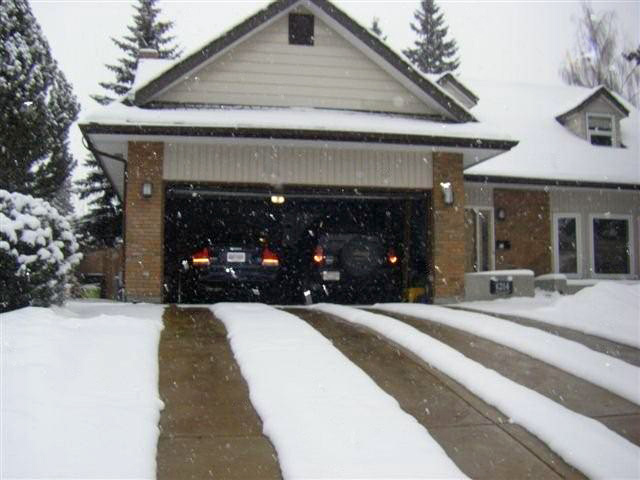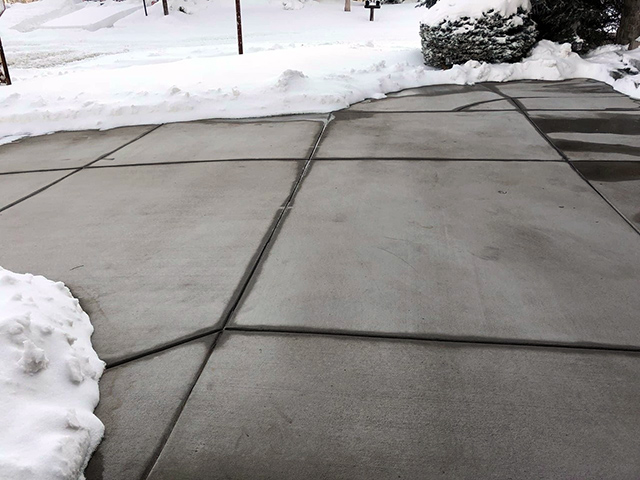| BUFFALO WEATHER FACTS AND STATS |
| Buffalo's coldest month is January when the average overnight temperature is 17.8°F. |
| Average annual snowfall is 94 inches. |
| Heaviest snowfall: 199.4 inches in 1976-1977. |
| Average daily high temperature December thru March is 34.5 degrees Fahrenheit. |
| The average annual high temperature is 56.3°F. |
| The average annual low temperature is 40.2°F. |
| December is the snowiest month of the year, with an average of 27 inches of snowfall. |
For a snow melting system to perform effectively in Buffalo, New York, it must be expressly designed to meet the specific needs of the demanding Buffalo winters. For almost two decades, Warmzone radiant heat professionals have been providing professional snow melting system design and layouts for homeowners and businesses in New York according to ASHRAE standards. We are seasoned radiant heat experts, and we know what it takes to keep a driveway in Buffalo clear of snow and ice during the winter.
In addition to offering the industry’s most highly regarded snow melting systems and components, Warmzone stands apart from other radiant heat providers when it comes to providing outstanding customer services. Our experienced design team carefully evaluates the demands of each snow melting system to provide the ideal layout and technical information for each installation. We also understand that industry-best components are only part of the snowmelt solution. Every snow melting system must be designed and installed correctly to ensure that the system performs as intended. For this reason Warmzone provides free installation training and technical support for installers and electricians. Installers can take the training with their personal instructor via web conference. Needless to say, this valuable service can ultimately save time and money in the long run. The free installation training and support that is included helps to ensure that each snow melting system is installed and performing correctly.

If your installer has any questions or concerns during the installation, he/she can call Warmzone and speak to a radiant heat expert who will guide them through the issue at hand. We are committed to providing unmatched service throughout the purchase and installation process. Because we maintain relationships with favorably reviewed installers throughout the country, we have a network of reputable installers who we may be able to recommend in the your area. This way customers in New York can have their system installed by professionals who have experience, and have been trained in radiant heat installations.
For over a decade ClearZone® snow melting systems have proven to be a trusted industry leader. ClearZone radiant heat cable features twin conductor heat cable with single-point connection, and can be installed in concrete and hot asphalt applications, as well as under pavers. The cable is also available pre-spaced in mats for easy “roll out” installation.
ClearZone snow melting systems are fully automated and maintenance free. When the sensor detects precipitation and the temperature is below a set point (typically 39°F) it sends a signal to the controller, which then sends power to the embedded heat cable, warming the driveway. Instead of waking up early to shovel snow, Buffalo residents can enjoy a cup of hot coffee as they gaze out at their snow-free driveway.
Warmzone snow melting systems are easy to customize and install. This gives homeowners great flexibility when installing radiant heat. Entire driveways can be cleared of snow and ice, or two 24-inch wide tire tracks can be installed. Or, if you have a problem area or a dangerous incline, you can simply install snow melting heat cable to warm that area. We are happy to work with you to identify and recommend the ideal solution for your needs. Call and talk to a radiant heat expert to learn more about the options that are available. Our professional system designers can customize your snow melting system to meet your snowmelt needs while keeping mindful of your budget. Call and speak to a friendly radiant heat expert today at 888-488-9276.
Radiant snow melting systems are specially designed according to ASHRAE standards, meaning that they are tailored specifically for the demands of the average temperature and snowfall of their location. In addition to the various layouts, no two radiant heat systems are exactly alike; however, there is a formula that can be used to help you determine the approximate operating cost of a snow melting system.
Guidelines to Determine a Heated Driveway's General Operating Cost |
|
| 1. | Determine the total square footage of the area that will be heated. (The average American home has an 800-square foot driveway.) |
| 2. | Multiply the square footage by the heat required (37 watts per sq. ft. for residential). This will give you a total for the watts per square footage required. |
| 3. | Divide this number by 1,000 to convert to kilowatts. |
| 4. | Look up the kilowatts-per-hour rate from the local power utility company. |
| 5. | Multiply the total watts-per-square footage by the watts-per-hour. This gives you the cost-per-hour of usage for the snow melting system. |
| 6. |
EXAMPLE (for an 800-square foot driveway): 800 (sq.ft.) x 37 (watts) = 29,600 (total watts). 29,600 divided by 1,000 = 29.6 kw per hour (This is what the power company will charge you per one hour of operation.) The average utility rate is .12 cents, therefore: 29.6 x .12 = $3.55. The heated driveway cost of operation would be $3.55 per hour. |

NOTE: Heating cables and mats are rated in total watts. If the snowmelt system is intended for a commercial application, then you would multiply the total square footage by 50 watts to get the total wattage required.
The operating cost of an automated snow melting system is typically less than that of hiring a professional snow removal service. Radiant heat can also help to extend the life of concrete driveways by preventing spalling, and keeping them from being subjected to abrasive snow removal methods or harsh snowmelt chemicals or salt. Enhancing safety is a particular concern for business owners who wish to avoid costly litigation that can result from personal injuries caused by slick ice. Radiant snow melting systems are easy to customize, so be sure to talk with a friendly Warmzone representative to learn about the many options that are available to accommodate your snowmelt needs as well as your budget.
Radiant heated driveway systems from Warmzone are fully automated. The snow melting systems consist of three main components: the heating element, activation device (an aerial- or pavement-mount snow sensor), and contactor panel. The heating element for electric systems is heat resistance cable, while hydronic systems utilize a closed loop of PEX tubing whereby specially treated hot water is pumped through the network. The most common (and simplest) applications for radiant snow melting systems are brick or stone pavers and concrete. However, snow melting systems are also commonly installed in asphalt. The methods for installing radiant heat in asphalt call for more care to avoid damaging the heat cable. Warmzone carries a special ClearZone asphalt heating cable that is designed to withstand the hot asphalt temperature and other stressful installation demands associated with asphalt. Despite the cable's durability, the abrasive nature of the paving process requires that greater care be taken during installation. ClearZone's high-temperature heating cable is the premier snow melting cable for asphalt. Be sure to talk with your installation expert to understand the specifications of the cable to ensure the successful installation of your asphalt heated driveway.
A small controller is used to operate the driveway heating system. The control unit can be either a compact wall-mounted control box (when used with a pavement-mounted snow sensor) or a contactor panel, which is used for systems with an aerial-mount sensor.
The activation device (snow sensor) triggers the system when moisture is detected and the temperature is below the adjustable set point. (This "trigger temperature" is usually set at 39°F). When weather conditions warrant, power is sent to the embedded heat cable. The cable then warms the driveway to prevent snow from accumulating. After the snowstorm, the system remains on for a short time to dry the surface and prevent ice from forming. The automated snow melting systems also include manual override capability to deal with snow drifts or runoff that has accumulated and formed ice in shaded areas. The manual function can also be used to preheat an area if you anticipate a massive storm, and thereby better prevent heavy snowfall from accumulating.
To learn more, call and speak with a radiant heat expert today at Warmzone. Contact us online, or call us toll free at 888-488-9276.